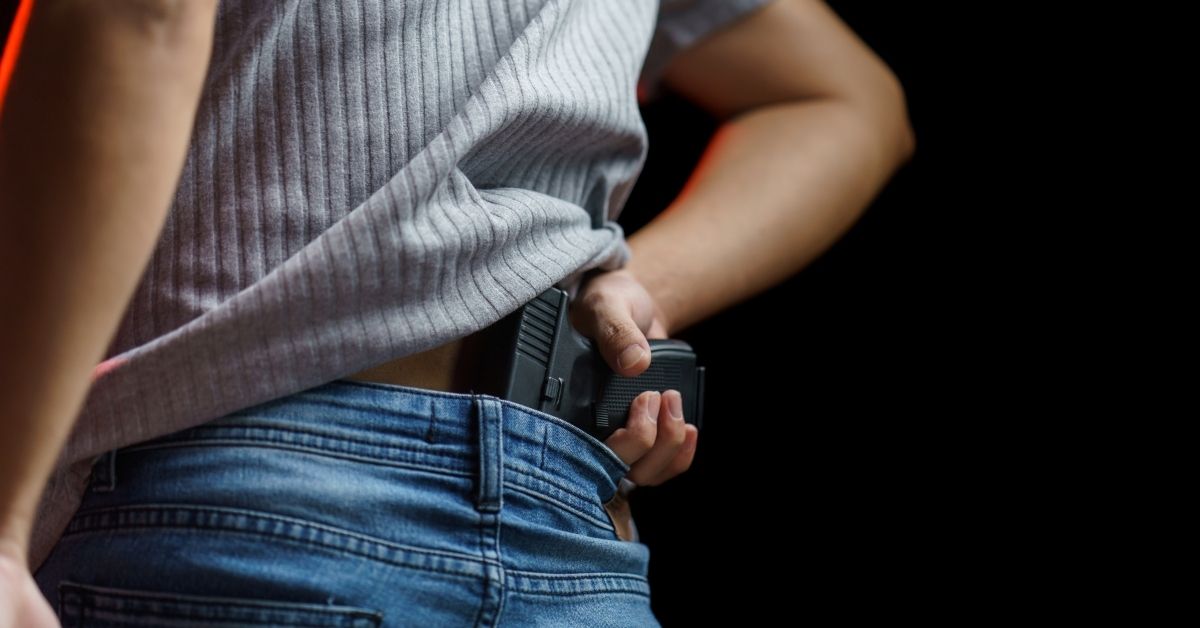The terrible nature of the majority of so-called rape prevention advice is a particular pet peeve of mine, and one specific argument continually gets under my skin. Whenever I discuss rape, rape prevention, and rape culture, I am guaranteed to be told that the solution to the problem is for women to buy or be provided with guns.
While women are not the only people who are raped since this advice is so heavily directed at women, this piece will focus on that situation and why just telling women to get a gun solves nothing. Please also note that this piece will discuss a variety of scenarios regarding rape and death.
Owning a Gun
One of the first objections to this advice is that it requires all women to be financially and physically capable of purchasing and using a gun. Many rape survivors are children or have a physical condition that would prevent them from being able to access or successfully use a gun. Even if a woman is physically capable of acquiring and using a gun, the purchase and training required to use it well can be cost-prohibitive for many. Already, “gun ownership” has excluded children, the disabled, and the impoverished from access to whatever protections owning a gun is supposed to offer.
Also Read
However, owning a gun also comes with an additional set of risks. Research has shown that if there is a gun in the house, a resident of the house is far more likely to be shot and injured or killed than the imaginary rapist intruder of gun proponents’ imagination. Proper gun safety in a home would make the weapon relatively inaccessible in the event of a home invasion where rape is attempted – poor gun safety could result in harm to a friend or family member. Neither solution is a good one.
Finally, gun ownership is not nearly sufficient to ensure that a woman will be protected from rape in all situations. The ability to use a gun successfully requires extensive training, which is an additional burden on women’s time, energy, and resources. Women with children, jobs, school, hobbies, and other activities may not have the ability or finances to add the amount of gun training required to be proficient in a combat situation to their schedule.
A Culture of Violence
What most people telling women to buy a gun forget is that for it to be effective, a woman must, therefore, be armed at all times, whatever she does throughout the day, and ready to kill at a moment’s notice. This level of hypervigilance is even above and beyond the everyday hypervigilance most women already experience – prolonged hypervigilance causes stress, exhaustion, illness, depression, and more.
Even soldiers in actual combat situations cannot maintain that state for long periods of time; telling women that a trip to the grocery store should be met with the same level of threat awareness is simply not realistic.

Additionally, even with extensive training, very few people are able to respond to an attack by shooting at the right target or hitting their intended target at all. Multiple scenarios have been created with a staged attack, and the result is always mayhem unintended injuries, and what would have been death in a real-world situation.
Putting women in a position to be responsible for that, should they be attacked in public, is not a healthy attitude and, if carried out to its logical conclusion, would result in even more deaths.
Guns and Rape
Telling women to buy a gun also ignores the realities of rape. Beyond requiring women to be armed at all times and, apparently, to develop the superpower of not feeling the strain caused by constantly expecting an attack, this advice simply does not address the true situations in which rape is likely to occur.
Most people who encourage women to buy guns seem to believe that rape is committed by strange men in dark alleys – in fact, rape is most often committed by someone the victim knows and trusts. Regardless of where rape occurs, using a gun in that situation is not likely to be successful.
Taking a life is never an easy decision, even when it is done in self-defense. Telling women we must take on the potential to kill every time we are in our homes and every time we leave them is simply not a tenable or helpful solution. On top of that, rape often causes what is referred to as “tonic immobility” – a state where a woman simply loses the ability to function, move, or even speak. It is a phenomenon that affects people when they are in too much shock to process what is happening, and it is not controllable by the person experiencing it. As a result, even if a woman had a gun in that scenario, she would be easily disarmed.
As most women are attacked by someone they know, it is even more unlikely that a woman will be able or willing to shoot her attacker. Shooting a complete stranger would be challenging enough (even for the very few women who have the time, ability, and expertise to successfully use a gun in that scenario) – attacking a loved one or a friend is even less likely to be a possible solution. The idea that a woman must be armed and ready to attack even when relaxing in her own home is simply absurd.
Rapists also tend to find ways to ensure that their victim is incapacitated in some way and cannot fight back physically or with a weapon. Alcohol, drugs, and physical violence that result in unconsciousness or an altered consciousness are all very common tools used by rapists. Should a woman have a gun and the training and skills to successfully use it, the gun is not going to help if she is unconscious or in a state of tonic immobility. On top of that, the gun can then be used as a way to blame the victim – after all, she had a gun.
The Consequences
Already, the advice to “just buy a gun” has excluded vast swathes of women from the ostensible protection it should offer. Additionally, women who have a gun are unlikely to be able to use it successfully in the face of an attack. However, for the sake of argument, let us examine a few scenarios in which a gun could possibly be used and what the outcome of those situations would be for the women.
Say a woman is attacked by a rapist, known or unknown to her. She is able to get her gun and shoot the attacker, who dies. Now she has a body on her hands and only the evidence of a struggle – to an outside observer, she appears to be a murderer. In the best-case scenario, she will be able to prove that she was engaging in self-defense. However, it is critical to note that women who go to jail for self-defense end up with significantly longer sentences than men who kill, even when killing out of sexual jealousy.
A rape may or may not have been prevented, but a man is dead, and the woman is almost certainly going to spend some time in jail, which will have negative consequences for the remainder of her life. On top of that, she will also be facing the reality that she killed someone.
A similar situation would play out even if she merely managed to injure her attacker but not kill him. At that point, it becomes a he-said/she-said scenario. If the man himself was unarmed, his intended victim could be framed to look like the aggressor rather than the victim. She may still end up facing jail time and other forms of public censure for “attacking” a man.
Convictions in rape cases and attempted rape cases are incredibly hard to achieve; a woman who shoots an unarmed man is, therefore, significantly less likely to see a favorable outcome when shooting in self-defense.
However, there are even worse scenarios that can play out. Suppose a man attacks a woman, and she is able to at least draw her gun – what is to stop the man from overpowering her before she is able to use it? Now the rapist has an even more powerful tool of coercion for the rape and may decide to use it to silence his victim permanently.
Finally, even if a woman is able to frighten a rapist off with a gun and avoids the need to use it, all she has accomplished is ensuring that the rapist will go on to pick a different target that may be less able to defend herself. Rather than preventing rape, the use of a gun just shifts the rapist’s attention elsewhere. As with most awful advice around rape, all of the emphasis of “just buy a gun” focuses on women’s behavior and making sure a rapist will find an easier target. This is not prevention.
In all of these scenarios, the consequence of having a gun when being attacked by a rapist creates additional risks, problems, and dangers. On top of the ludicrous burdens implied by telling women to buy a gun, having a gun will in no way prevent rape. It can, however, increase the likelihood that women will end up in jail or dead.
True Prevention
Actually, preventing rape requires us to focus much less on the behavior of potential victims and much more on the behavior of rapists. Knowing how rapists act, who they choose as their targets, and what strategies they use to successfully get away with their crimes will result in far more productive and successful prevention strategies. Constantly placing the burden of avoidance on women adds impossible stresses to women’s lives and does nothing more than put us at further risk and at risk of being blamed if we are still assaulted.













